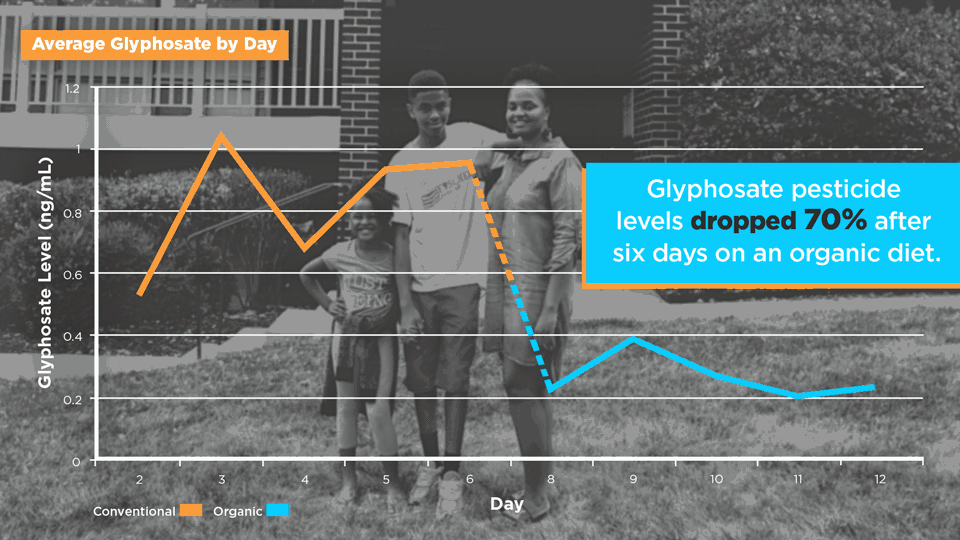New study shows levels of glyphosate (aka Roundup) in families drop dramatically after one week of eating organic

A new study found that eating an organic diet can dramatically reduce levels of glyphosate in consumers. Glyphosate use has skyrocketed in the past decade, and continues to be the most widely used pesticide in the world. Exposure to this chemical occurs directly when people live or work where it is sprayed, and indirectly when contaminated food is consumed. A new study co-authored by Friends of the Earth and published in the journal Environmental Research monitored glyphosate levels in four families from across the U.S. before and after eating an all-organic diet, and found that the organic diet intervention reduced glyphosate in the participants’ bodies by an average of 70%. Glyphosate was detected in all study participants and 93.7% of urine samples indicating that exposure was ubiquitous. The dramatic reduction of detected glyphosate suggests that the main path of exposure for the study participants is the consumption of contaminated food. Because glyphosate is prohibited for use in organic production, switching to an organic diet reduces the participants’ exposure. However, glyphosate levels were consistently higher in children versus parents in this study during both conventional and organic diet phases, (children’s range during conventional diet phase: 1.03 to 6.22 ng/ml versus adult’s range: 0.26 to 0.82 ng/ml). This suggests that children have more exposure to glyphosate, whether from their environment like playgrounds and parks where the chemical is used to manage weeds, or because they may eat more of the kinds of foods that have high levels of glyphosate like oat cereals, bread, crackers, and gronala bars. There is also evidence that children are less efficient at metabolizing some chemicals which leads to more accumulation in the body. This is the first study of its kind to show that organic diets can reduce indirect exposure to glyphosate, and also suggests that more research needs to be done to measure exposure from diets and from the environment.


